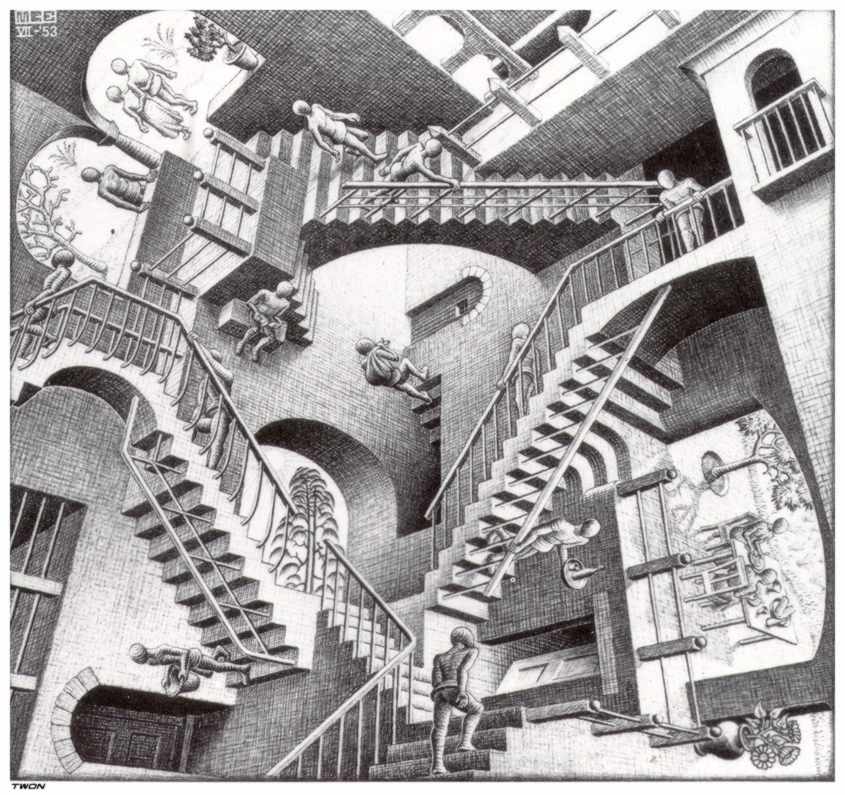Escher is a famous artist who created mathematically challenging artwork. He used only simple drawing tools and the naked eye, but was able to create stunning mathematical pieces. He focused on the division of the plane and played with impossible spaces. He produced polytypes, sometimes in drawings, which cannot be constructed in the real world, but can be described using mathematics. His drawings caught the eyes and looked possible by perception, but were mathematically impossible. His particular drawing, Ascending and Descending, which can be viewed at the M. C. Escher website, was one of these masterpieces. In this drawing, Escher creates a staircase that continues to ascend and descend, which is mathematically impossible, but the drawing makes it seem realistic. The following image, Relativity, is an example.
 M.C. Escher's "Relativity" (c) 2006 The M.C. Escher Company - the Netherlands. All rights reserved. Used by permission. http://www.mcescher.com |
Escher also created many interlocking figures that seemed mathematically incorrect. By using black and white, he was able to create different dimensions to make the mathematically impossible seem possible. Escher often combined two and three dimensional images into a single print, like his piece entitled Reptiles, where the reptiles themselves come out of a tessellation and walk around and then go back into the two dimensional picture.
To see more Escher pieces, visit www.mcescher.com.
Sometimes, artists want to create certain linear perspectives. In order to accomplish this, the artist will pick a point on the piece such that all the lines in the piece will come together at that single point. In this way, artists use math to create a certain perception for their audience, without any special mathematical tools. Many artists use math without realizing it. Escher didn’t use any mathematical tools while creating his pieces. In particular, his Circle Limit III contains tessellations that were drawn completely freehand and yet are mathematically correct to the millimeter.
